The Land of Fire and Ice
A volcanic island holding itself steady amongst the roaring North Atlantic, Iceland is an adventurer’s paradise. From hot springs and geysers to volcanoes and waterfalls, the natural beauty of this island is hard to compete with. Iceland also boasts being one of the best places to witness the northern lights and is fast becoming the home of cold water surfing.
While Iceland has seen a surge in tourism over recent years, there’s still plenty to be discovered along its shores, highlands, and valleys.
And while the focus tends to be on the geology and coast, Iceland also hosts diverse aquatic and avian wildlife, as well as some of the coolest towns and cities we’ve been to.


Reykjavík
Located in South-West Iceland, the nation’s capital Reykjavík is the home of Iceland’s biggest and most impressive museums, restaurants, galleries, and other cultural attractions. Here, you’ll find the best place to try local cuisine in some of the best restaurants Iceland has to offer, while also exploring the Harpa Concert Hall, geothermal beach, Viking museums, and the old harbour.
There’s plenty to do in Reykjavík, so if you’re planning on staying here, be sure to take part in a culture walk so you don’t miss any of the must-see sights!
As a capital city, you’ll find all basic amenities including plenty of hotels, hostels, and rentals to choose from if you’re looking for somewhere to stay. We find that Reykjavík provides a great base-camp for explorers looking to take on Iceland’s west coast.
While many will overlook this city in favour of the spectacular natural sights in Iceland, we still think Reykjavík is a must-visit if you’re looking to experience some Icelandic culture and to get a good sense of local life.
Vík
Vík i Myrdal (Vík), located on the south coast of Iceland and bordered by Reynisfjall Mountain, Myrdaklur Cliffs and the famous Reynisfjara Beach gives the impression of an outpost located in the Icelandic wilderness. However, this village is far from an ill-equipped outpost. With a beautiful church, plenty of amenities to restock and refuel on your journey, and friendly locals, Vík is a worthwhile visit.
Vík’s true charm lies in the attractions that surround its borders. Reynisfjara Black Sand Beach is the most beautiful black sand beach in the world, with rugged cliff faces falling down into the long black sand that hugs the coastline. Experience the true power of the ocean as powerful waves crash into the staggeringly beautiful beach. If you’re hoping to catch Iceland at its most impressive, then be sure to visit Reynisfjara beach. Vík provides a great base camp for an expedition here.
Around Vík, you’ll also find Reynisfjall Mountain, formed as a result of a volcanic eruption occurring underneath a glacier. This sight is as impressive as it sounds, and is definitely worth a visit. There’s plenty of geology around Vík that’s within touching distance, so be sure to take some time to explore the cliffs, mountains, and volcanoes that litter the local area.
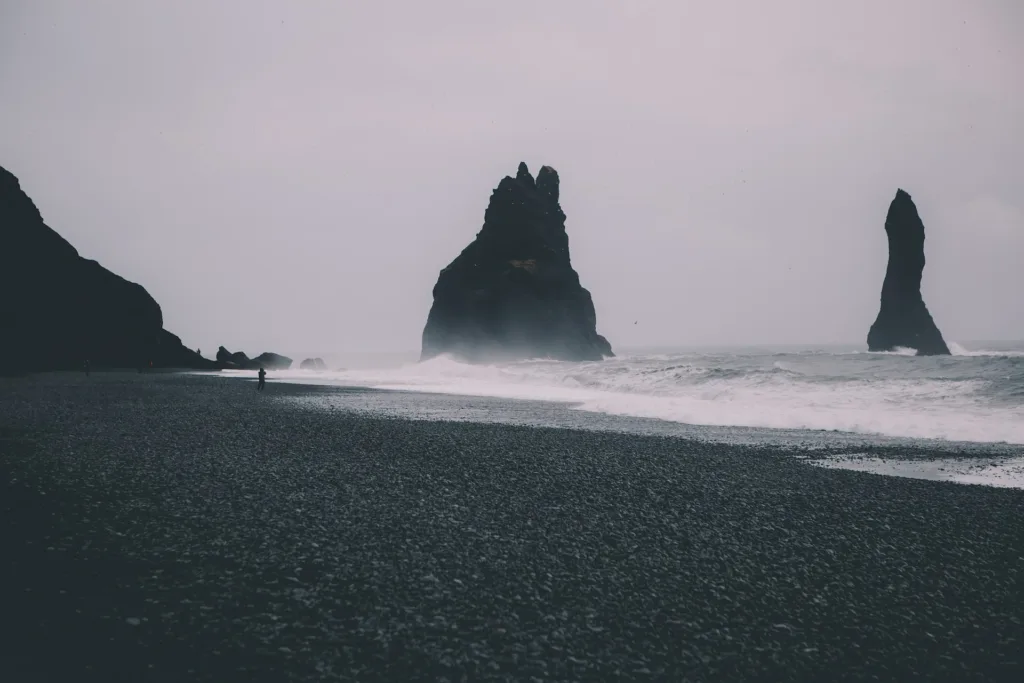


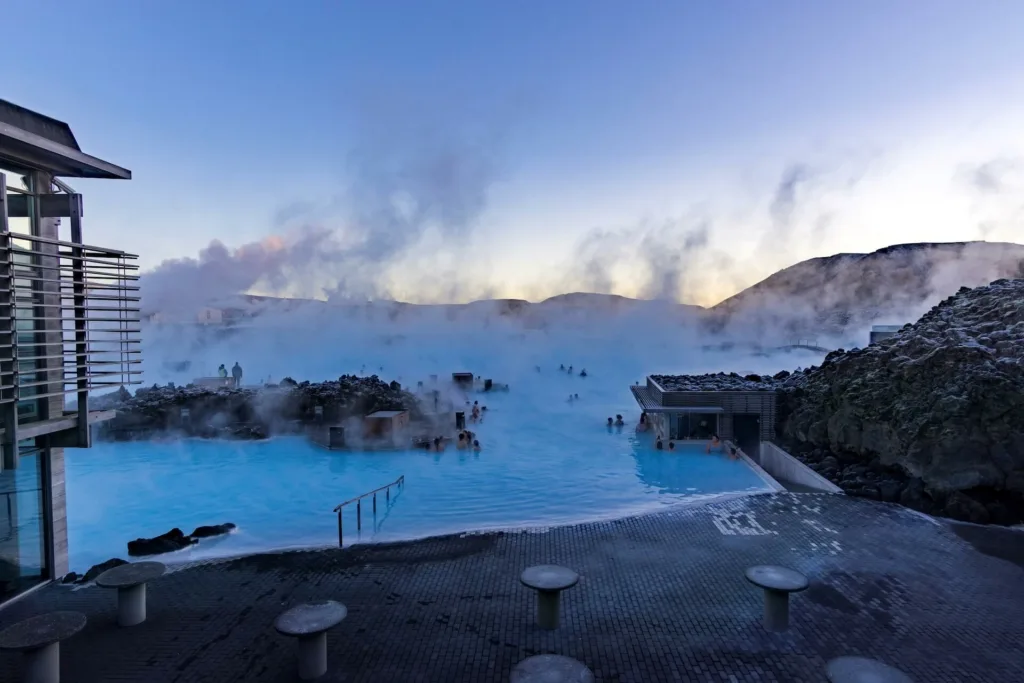
Blue Lagoon
Iceland’s most popular tourist attraction, Blue Lagoon is a geothermal spa located in southwest Iceland. Bathe in the silica and sulphur-rich water which stays at a toasty bath-like temperature year round. It’s said that the waters here are really good for your skin and wellbeing, and the entire site is well equipped with amenities to make your stay as enjoyable as possible. If you’re looking to take a dip into geothermal pools, then Blue Lagoon is certainly worth a trip.
It’s also easily accessible from Reykjavík, either by tour bus or a 30-minute drive.
Askja
Hidden right in the middle of the Icelandic Highlands, this towering volcano really has an otherworldly feel about it. Known for its activity and dramatic geology, Askja is a must-see for adventurers looking to experience Iceland’s volcanic beauty first-hand. With mountains 1.5km high paired with staggeringly beautiful lakes and craters, those looking for an adventure will feel right at home hiking around Askja.
A little difficult to get to, especially in winter, but worth the effort if you want to get off the beaten path and dive into Iceland’s raw natural wonders.
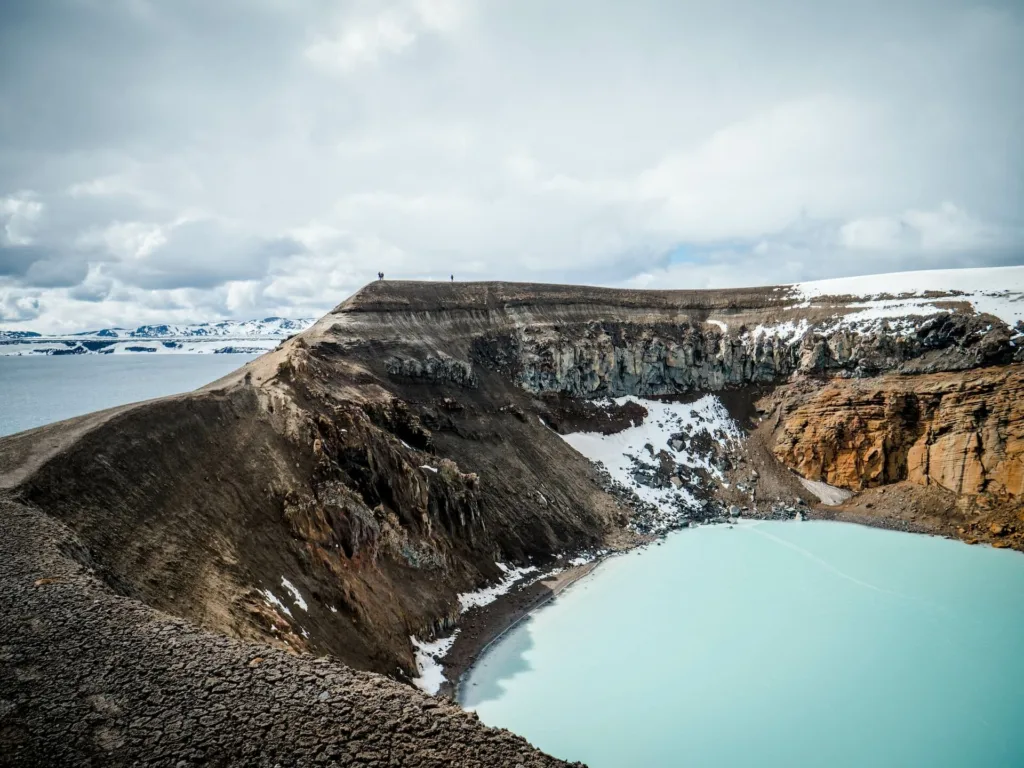

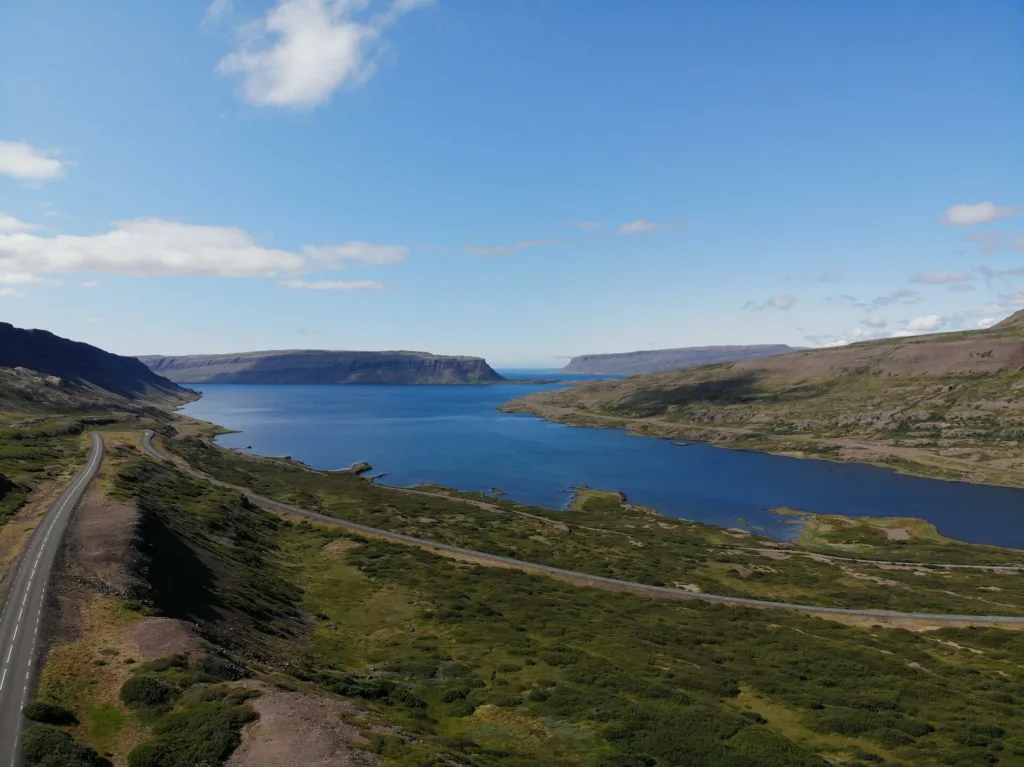

Westfjords
If you’re looking to get away from civilisation and experience untouched natural beauty, then Iceland’s most remote and spectacular region, the Westfjords, is a perfect destination for you. You’ll need a car to travel through this region of Iceland due to its remoteness, but when you’re here, you’ll be hard-pressed to run out of sights to see.
Thanks to its relatively short traveller footfall, you’ll be able to explore the Westfjords relatively undisturbed by crowds. From pink sand beaches to towering waterfalls, if you’re looking to escape from reality in Iceland, then be sure to visit the Westfjords.
Kirkjufell
You’ll have seen pictures of this mountain before. Kirkjufell, located in west Iceland, is strangely mystical with its unusual shape protruding out of the landscape seemingly uninvited by the coast surrounding it. The ‘most photographed mountain in Iceland’ attracts thousands of visitors a year to view its unusual formation and beautiful surroundings. While it’s absolutely worth a visit (there’s a reason it’s so popular), be prepared for crowds. We recommend visiting first thing in the morning to experience the sun rising around the silhouette of this natural phenomenon. Tours frequently operate to Kirkjufell, so it’s easy to get to if you don’t have a car.

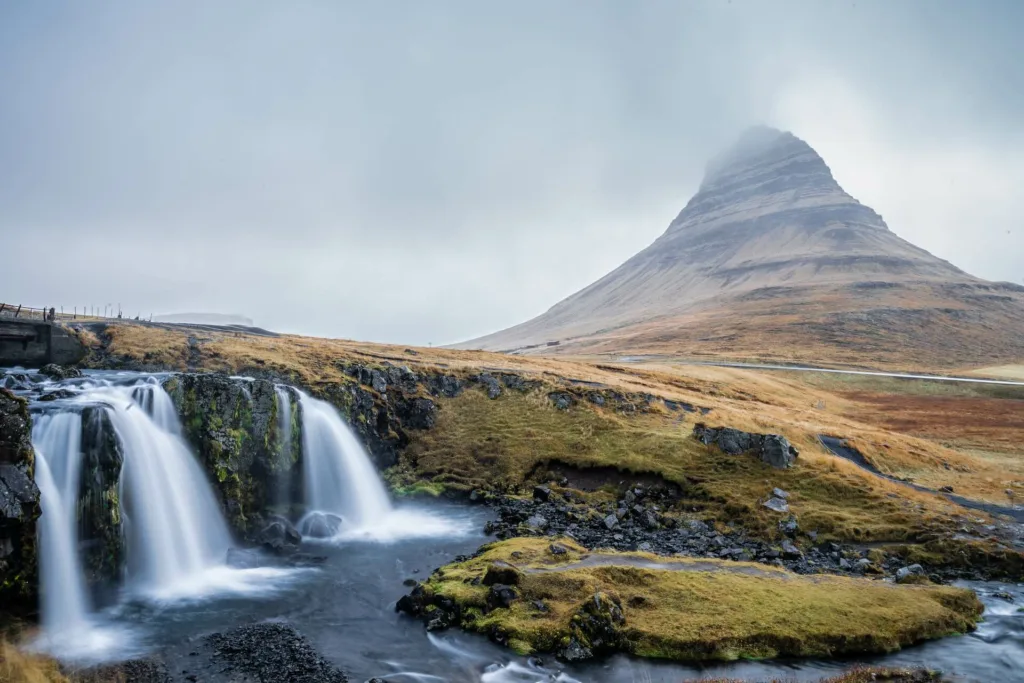
Nature
Iceland is known the world over for its natural beauty, offering some of the most unique sights you’ll find anywhere on Earth. From active volcanoes and spectacular spurting geysers, to waterfalls and mountains that look like they belong in Middle Earth, Iceland is home to the best of what nature has to offer. The waters off the coast also boast a huge variety of wildlife. Be sure to check out as many of the island’s natural places as you can during your visit.
Culture
Iceland, as a Nordic country, has a strong connection with its Viking past. Locals here are incredibly proud of their heritage, with a language resembling Old Norse and many customs and traditions that date back to their ancestors. While Viking traditions are present within Icelandic culture, there is also rich culture around literature and music. In fact, Icelandic music is becoming more and more mainstream elsewhere in the world. With much of the culture built around ancient stories and history, many believe in elves (about 45% of the population!), and other creatures from ancient folklore.
Activities
Iceland is full of activities that us adventurers just love. From some of the best cold water surfing in the world to hiking to watching the northern lights in winter, you’ll be hard-pressed to run out of things to do. Explore the small towns and villages in the Eastfjords, climb an active volcano, bathe in hot springs, or explore an ice cave, the list is practically endless. You probably won’t fit it all into one trip, but that’s ok – there’s always next time.
Cuisine
We’re going to tell you now – the food in Iceland is actually good. Not only good, but some dishes are absolutely delicious thanks to fresh ingredients and recipes passed down for generations. We always say that the best way to experience a culture is to try their food, and Iceland is no exception – the food here brings together a literal taste of how the locals use the island itself to come up with some of the tastiest dishes we’ve ever had. Be sure to check out the restaurants in Reykjavík which offer the best sample of Icelandic cuisine.
Accommodation
Whether you’re looking for a standard hotel, a unique home, a sleeping pod with unlimited sky views of the northern lights, or a camper van to take to the road yourself, Iceland offers accommodation to suit every traveller.
Tours
The so-called “Golden Circle” tour is perhaps the best place to start if you want to see Iceland’s natural beauty. But if you’re looking for something else, then Iceland has you covered. Tours operate all over the island to all the major attractions, and even some you might not have heard of. For those new to the island or a little unsure of what they want to see, a tour is great way to hit all the must-see attractions.
Visas and Entry Requirements
Iceland allows visitors from many countries to visit for up to 90 days without carrying a visa on arrival. This includes the US, UK, Canada, and many other countries. Visitors from the Schengen area can stay for an unlimited amount of time. If you aren’t sure whether you will need a visa for your country, the Icelandic government has made this handy visa checker.
As for COVID-19 restrictions, Iceland has lifted all prevention rules at their borders, meaning that no proof of vaccination or negative test result is required to gain entry to the country.
Carrying valid travel medical insurance is not a requirement, but is recommended.
Local Laws and Customs
Iceland has some strict laws regarding smoking, drinking, and use of illegal substances.
- The legal drinking age is 20
- Smoking is not permitted in enclosed public spaces
- Possession and use of illegal drugs is a serious offence.
- You’ll be able to wild camp in most areas, but some sites require permission.
- Tipping is not commonplace in Iceland
- Icelanders have a deep appreciation for nature. Be sure to avoid any harm to the environment.
- If you’re using hot springs, be sure to shower before entering the water.
Safety
Iceland is one of the safest countries you can visit. With some of the lowest global crime rates and no animal predators, there’s little here to worry about when it comes to your safety.
However, as Iceland is a cold country, be sure to pack prepared for all weather scenarios. Wear lots of layers to stay warm, especially in winter.
If you’re planning on driving in Iceland, it’s also important to make sure you’re prepared. Many roads here have gravel surfaces, and all are susceptible to ice and snow, making them more dangerous than you might expect. Many roads are only passable with a well-equipped 4×4 vehicle, so be sure to plan and make sure your car is suitable for the environment. It’s also easy to get caught in snowstorms in winter, so make sure you’re prepared if you’re going off-trail in your vehicle. Here’s information from the Icelandic government on driving in Iceland.
RESPECT
Icelandic people are very proud of their nation’s reputation as one of the cleanest and most eco-friendly nations on the planet. As such, it’s important that you respect their land as they do. Never litter and always take your mess home with you – leave no trace. It’s also a bit taboo here to buy plastic water bottles, so try to use sustainable packaging and items where possible.
Respect rules around tourist sites – the rules are there to make sure that everyone gets to enjoy the natural beauty of Iceland, and be sure to remain polite when interacting with locals. The people here are very warm and friendly, but do expect the same in return.
Packing list
- Universal Adaptor, or Type-C/F plug adaptor (Iceland’s grid operates at 230V 50Hz, the standard in Europe)
- Waterproofs
- Thick Wetsuit (6/5mm)
- Lots of layers
- Cold Weather Clothing (for Winter Months)
- Travel Wallet
- Toothbrush Travel Cover
- Travel Locks
- Midge repellent
- Power Bank
- Dry Bags
- Packing Cubes (Suitcases)
- Multivitamins for sickness
- Caps and Hats
- Sunglasses – snow blindness is very real
- Sunscreen – it may be cold, but if it’s sunny, the UV rays can still damage your skin!
1
Can I drink the tap water in Iceland?
Yes! Iceland’s tap water is considered safe to drink, sourced primarily from groundwater. In fact, it’s some of the cleanest in the world.
2
What's the temperature like in Iceland?
Iceland’s average temperature ranges throughout the year. In winter months (November-January), average daily temperatures hover around the freezing mark, but can drop lower. In the summer (June-August), you can expect average daily temperatures of 10°C, with highs of 12°C.
3
Should I rent a car in Iceland?
If you’re looking to venture out and see as much of Iceland as you can during your trip, then renting a car is definitley a good idea. Public transport here isn’t excellent, and many locations can only be accessed by car. Just be sure you’re renting a vehicle suitable for the adventure you’re planning. Some areas of the highlands are only accessible in a 4×4 vehicle.
4
What side of the road do they drive on in Iceland?
In Iceland, you drive on the right-hand side of the road, overtaking on the left. It’s also a requirement to have your headlights on all the time, even in the day.
5
Are there polar bears in Iceland?
While polar bears are not native to Iceland, and you’re very unlikely to come across one, there have been rare instances where they have arrived on the island.
6
Do people speak English in Iceland?
The majority of Icelanders speak fluent English, being taught as second language. You shouldn’t have have any issues using English as a common language when out in Iceland. Many also speak other languages such as French and Spanish.
7
What wildlife is there in Iceland?
Iceland only has one native land animal native to the island – the Arctic fox. You might also spot some reindeer, although they’re not native. That said, you’ll see plenty of birds and aquatic life around Iceland, including whales and puffins.
8
Is Iceland Safe?
Iceland is one of the safest countries you can visit in the world. No native predators live on the island, and the country has one of the lowest crime rates. Just make sure you’re prepared for cold weather if you’re travelling in the winter.
9
Is Iceland safe for LGBTQ+ travellers?
Iceland has some of the most progressive LGBTQ+ laws in the world. It’s frequently rated as one of the most accepting countries you can visit, and the vast majority of Icelanders support LGBTQ+ rights. 87% of the population supported gay marriage back in 2004.
10
What is public transport like in Iceland?
Public buses to cross the island are available, but can be a little inconsistent, and many places don’t have any service at all. There is no rail-based public transport in Iceland, so it’s a good idea to rent a car if you’re hoping to travel between towns and cities.

